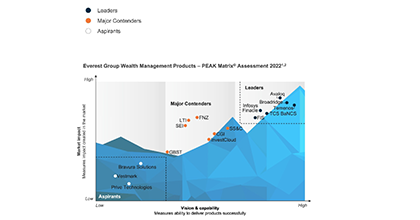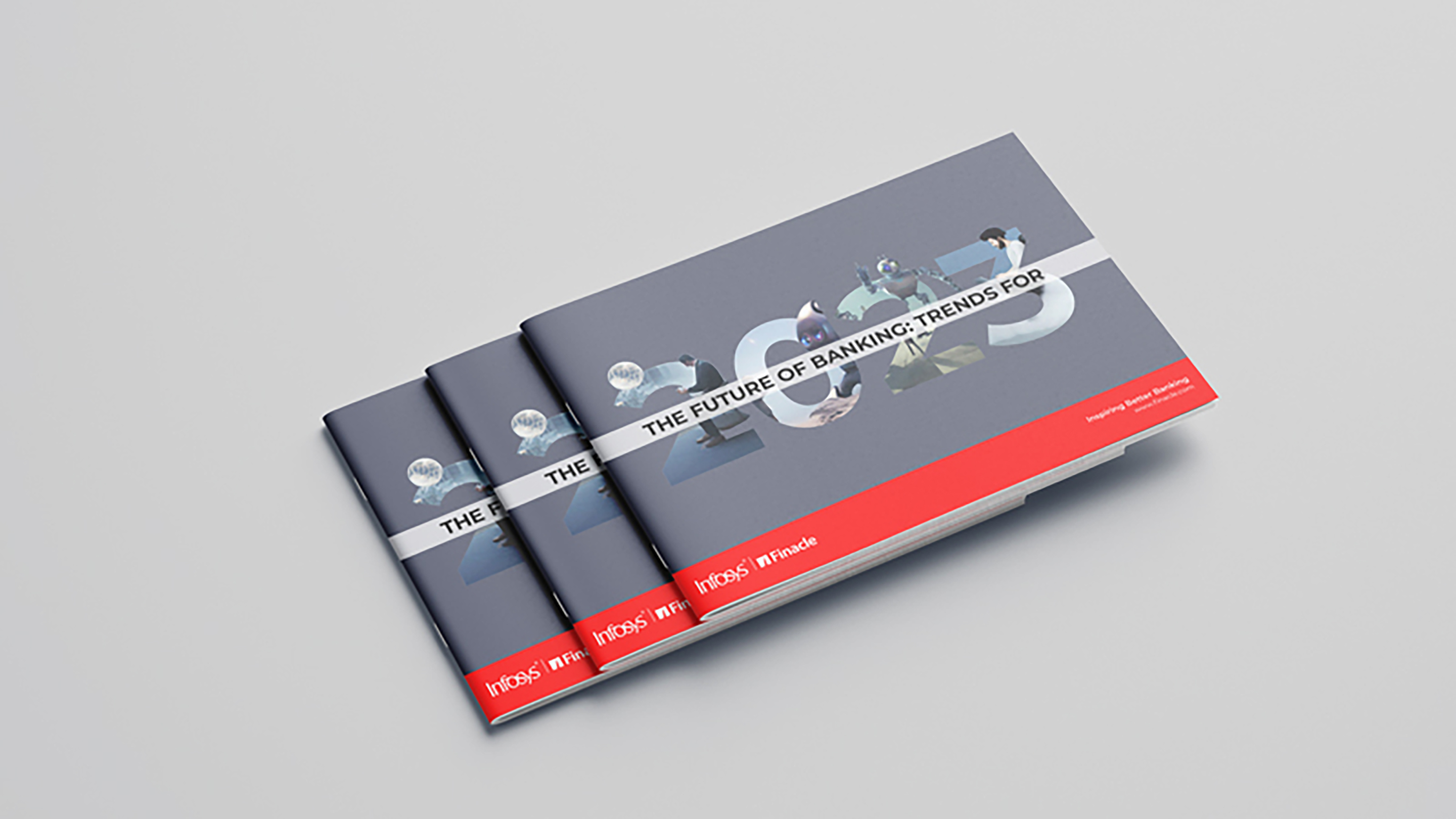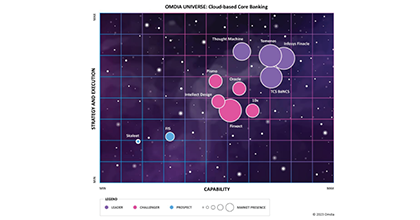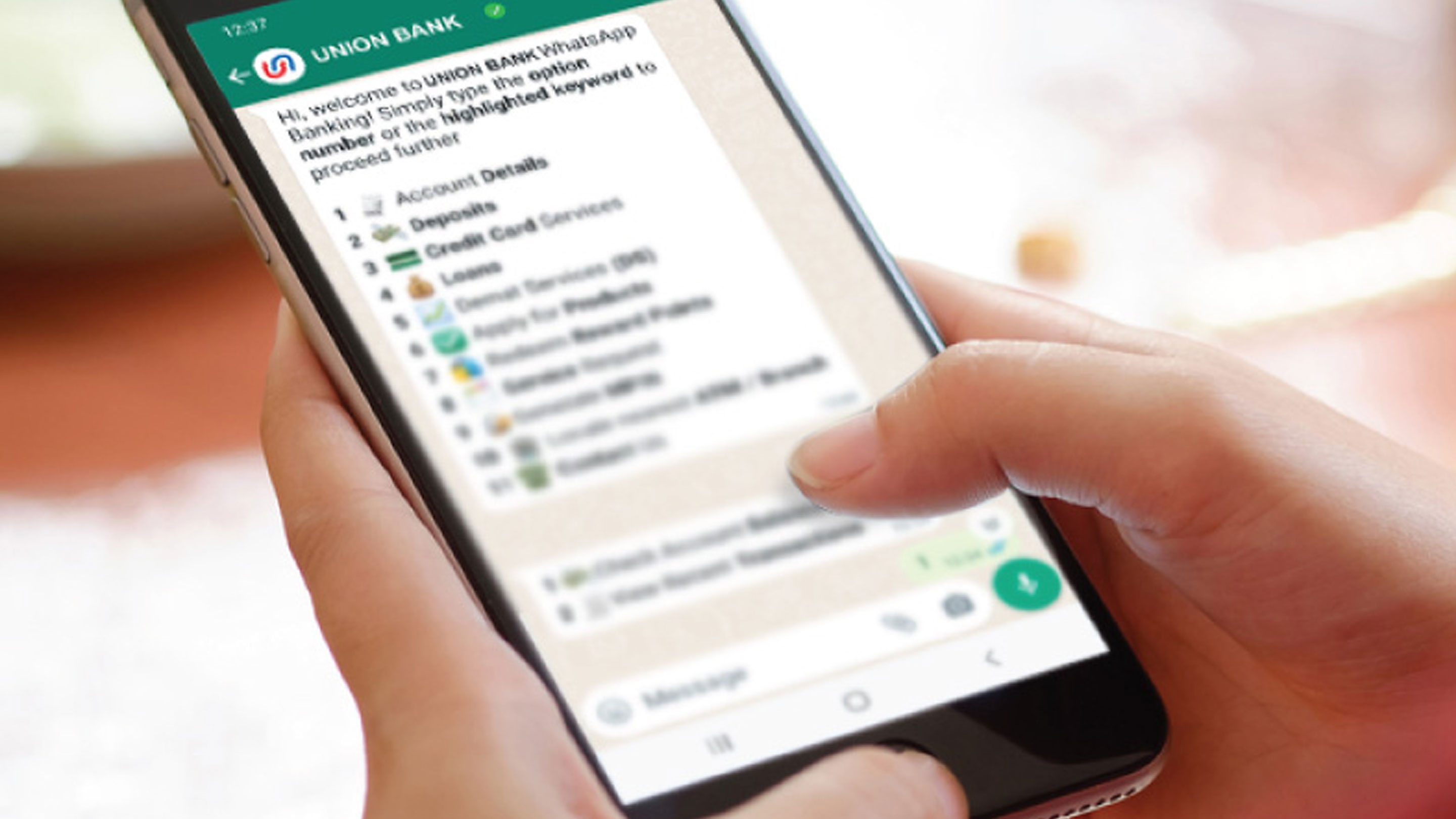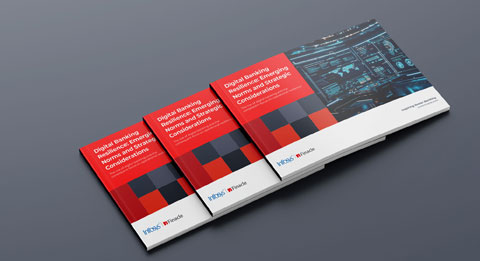-
![]() ESG in bankingESG-conscious banking should create new and future-proof value streams to build a sustainable and resilient business.Read More
ESG in bankingESG-conscious banking should create new and future-proof value streams to build a sustainable and resilient business.Read More -
![Everest Group PEAK Matri Everest Group PEAK Matri]() Everest Group PEAK MatrixA comprehensive solution delivering a full spectrum of wealth products as great experiences. It also improves the productivity of financial advisors and streamlRead More
Everest Group PEAK MatrixA comprehensive solution delivering a full spectrum of wealth products as great experiences. It also improves the productivity of financial advisors and streamlRead More -
![]() Subsidiary of an American Bank in IndonesiaFind out how a leading American bank adapts to a digitalized trade and supply chain finance operations as a part of its larger transformation by leveraging Finacle Trade Finance Solution Suite.Read More
Subsidiary of an American Bank in IndonesiaFind out how a leading American bank adapts to a digitalized trade and supply chain finance operations as a part of its larger transformation by leveraging Finacle Trade Finance Solution Suite.Read More
-
![]() Recomposing Banking: Leading the Digital ContinuumReport gives you a glimpse of the major areas where recomposing banking will create significant impact and value, Infosys Finacle has put together a report on..Read More
Recomposing Banking: Leading the Digital ContinuumReport gives you a glimpse of the major areas where recomposing banking will create significant impact and value, Infosys Finacle has put together a report on..Read More -
![]() Core Banking on Cloud: Navigating to the Fast LaneTake a deep dive into cloud-based core banking and explore the imperatives, opportunities and challenges, and the hallmarks of a robust solution.Read More
Core Banking on Cloud: Navigating to the Fast LaneTake a deep dive into cloud-based core banking and explore the imperatives, opportunities and challenges, and the hallmarks of a robust solution.Read More -
![]() Embracing Payments ComposabilityA step-by-step guide for maximizing Real Time Payment opportunities by embracing Payments Composability...Read More
Embracing Payments ComposabilityA step-by-step guide for maximizing Real Time Payment opportunities by embracing Payments Composability...Read More
-
![]() Shaping Banking’s Next: Banking Technology Trends for 2025 and BeyondThe banking industry has been balancing disruption and opportunity for several years now, and the pace of change shows no signs of slowing as we move into 2025 and beyond.Read More
Shaping Banking’s Next: Banking Technology Trends for 2025 and BeyondThe banking industry has been balancing disruption and opportunity for several years now, and the pace of change shows no signs of slowing as we move into 2025 and beyond.Read More -
![]() Virtual Accounts 2.0: Surpass Conventional Cash Management and Unlock Next-Gen PossibilitiesVirtual Account Management was a groundbreaking shift in the banking landscape, revolutionising use cases like cash concentration, pooling, centralised treasury management, and in-house banking (POBO, ROBO, COBO)Read More
Virtual Accounts 2.0: Surpass Conventional Cash Management and Unlock Next-Gen PossibilitiesVirtual Account Management was a groundbreaking shift in the banking landscape, revolutionising use cases like cash concentration, pooling, centralised treasury management, and in-house banking (POBO, ROBO, COBO)Read More -
![]() Unlocking Hybrid CloudAs banks push forward with their digital transformation agenda, cloud serves as a pivotal enabler. Each bank, at varying stages of adoption, crafts its unique path, dictated by context, regulations, and risk appetite.Read More
Unlocking Hybrid CloudAs banks push forward with their digital transformation agenda, cloud serves as a pivotal enabler. Each bank, at varying stages of adoption, crafts its unique path, dictated by context, regulations, and risk appetite.Read More
-
![]() Banking on CloudThis report from Infosys Finacle delves into the need for accelerating cloud adoption, highlights the current state of the industry, and puts forth key recommenRead More
Banking on CloudThis report from Infosys Finacle delves into the need for accelerating cloud adoption, highlights the current state of the industry, and puts forth key recommenRead More -
![]() Omdia Universe | Cloud-based Core BankingIn the report, Omdia highlights the following key capabilities of leading cloud-based core banking providers:Read more
Omdia Universe | Cloud-based Core BankingIn the report, Omdia highlights the following key capabilities of leading cloud-based core banking providers:Read more
-
![]() Emirates NBDEmirates NBD consolidates its operations on a single version for scalability, agility, and standardization.Read More
Emirates NBDEmirates NBD consolidates its operations on a single version for scalability, agility, and standardization.Read More -
![]() A Global Top 5 BankDiscover how a global top 5 bank headquartered in the US accelerated payments transformation.Read More
A Global Top 5 BankDiscover how a global top 5 bank headquartered in the US accelerated payments transformation.Read More -
![]() Union Bank of IndiaUnion Bank of India launches Union Virtual Connect (UVConn) by leveraging WhatsApp to provide customers personalized banking services.Read More
Union Bank of IndiaUnion Bank of India launches Union Virtual Connect (UVConn) by leveraging WhatsApp to provide customers personalized banking services.Read More

Achieving Financial Goals With Gamification
Blogs
In Nir Eyal’s book Hooked, he explains a 4-step Hook model (trigger, action, variable reward, and investment) as key to building habit forming products. This can help customers get the service they seek in a more rewarding and engaging manner and can help organizations meet their business goals. Gamification is one of the tools that can help organizations in executing such a model. So, what is gamification? It is the strategy of deploying concepts in games (say for example: points, levels, leader boards, etc.) to products and services in any industry. The purpose of this strategy is to increase revenue (from existing customers, while also attracting new customers) by increasing customer engagement.
If designed and deployed well, gamification can make the experience of customers meeting their needs much more fun, more engaging, and simpler. Gamification, in essence, satisfies the psychological needs (belongingness needs and esteem needs as per Maslow’s hierarchy) while helping them meet their objectives.
One particular aspect of gamification, which many industries have deployed successfully are loyalty programs. Be it airlines, hotels, online shopping and many more. Introduction Other industries that have tapped into gamification includes fitness, education, learning and development among others. Banking industry is no different, where gamification can be a game-changer in engaging customers more. However barring credit cards businesses to an extent, gamification has not had the intended impact in banking.
There are various reasons contributing to this including:
- not being materialistically rewarding for customers
- not being designed properly or for the right financial use case
- not being interesting enough
In short, to increase the customer adoption of gamified offerings, banks need to pivot the purpose of gamification. The purpose needs to change from only encouraging more usage of banking products to facilitating the lifestyle goals of customers.
How Can Customers and Banks Benefit From Gamification?
Banks can leverage gamification to:
- Improve customers’ financial literacy
- Inculcate better savings habits in customers
- Reward customers for using their products & services
- Attract prospects, including potential customers like teenagers
In this process, customers get to understand their own needs better and to understand how their bank can help them. One use case in banking that can be made interesting and rewarding to a customer and to a bank is helping customers achieve their financial goals.
Achieving financial wellness is the holy grail for any customer. Planning for the same is mostly considered to be a painful & complex exercise and executing the plan even more so. It inherently involves maximising savings and minimising expenditure to various degrees and varying durations depending on the goals set.
Gamification in financial goals can not only help the customer meet the goal but also make the journey more rewarding and enjoyable. Banks also stand to benefit from this. They get to understand the customer and their goals better, which in turn, provides banks an opportunity to tailor personalized recommendations in the context of the goal of the customer.
In this journey, banks can also inculcate better savings and investment habits in customers by ‘doing’ and not just ‘showing’. As customers meet their goals with a bank providing such services, customer engagement and loyalty increases. Such customers tend to use more products of the bank which in turns makes the bank business more profitable and sustainable.
To further understand how gamification can be successfully deployed to help bank customers meet their financial goals, click here and read the detailed thought paper on gamification.



©2025 -Edgeverve Systems Limited | All rights reserved

